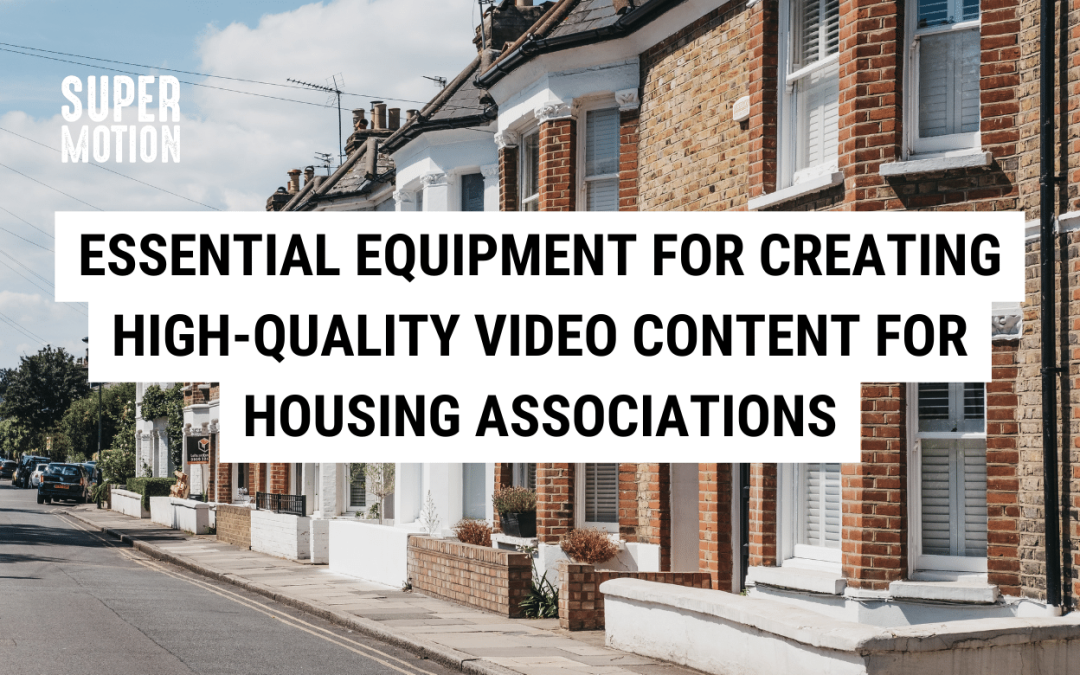
Common Issues in Making Social Media Videos for Housing Associations
Common Issues in Making Social Media Videos for Housing Associations
If you’re working in marketing for a Housing Association, you know that social media videos are a powerful tool to engage with both current and potential tenants. However, creating high-quality videos can be a challenging task.
You might face common issues such as poor video quality, budget limitations, inefficient production, lack of audience engagement, insufficient content variety, platform tailoring, and more
Fortunately, as video production experts, Super Motion is here to guide you through each of these challenges with practical solutions that don’t require you to be a technical expert.
Video and Audio Quality
To ensure a high video quality, you need to follow some basic principles:
First, use consistent lighting, either natural or artificial. Make sure to avoid harsh shadows or bright highlights that can distract the viewer.
Second, keep your camera steady and use a tripod or similar tool if possible. Shaky camera work makes the video look cheap and unprofessional.
Finally, record clear audio using external microphones that can eliminate background noise. This will dramatically improve the overall sound quality of your video.
Budget Limitations
If you face budget limitations, don’t worry. In today’s world, you can create professional-looking videos using your smartphone camera and free editing software such as iMovie or Adobe Premiere Rush.
Of course, you need to learn some basic editing techniques and use cheap or DIY props to improve the video’s visual appeal. For instance, use natural light instead of expensive lighting equipment or create your own backdrop using curtains or bed sheets.

Efficient Production
Efficient production is essential to create a steady stream of social media videos. To achieve this, plan ahead by creating a content calendar that aligns with your marketing objectives.
This will help you to avoid last-minute rushes and ensure that your videos are consistent in terms of style, tone, and messaging.
Also, batch record your videos to save time and streamline editing. Finally, leverage online collaboration tools like Google Drive or Dropbox to share files, comments, and feedback among your team members.
Engage Your Audience
Audience engagement is the key to success in social media videos. To boost engagement, focus on community stories and relevant housing topics that resonate with your target audience.
Use storytelling techniques to create an emotional connection with the viewer and include a call-to-action that encourages them to like, share, or comment on your videos.
Also, be responsive to your audience’s feedback and incorporate their suggestions and opinions in your video content.

Engagement Metrics
To track your social media video’s performance, use engagement metrics such as views, shares, comments, and likes. This will help you to understand what works and what doesn’t, and adjust your strategy accordingly.
Additionally, use analytics tools such as Google Analytics or YouTube Analytics to get more insights into your video’s audience demographics, retention rates, and other KPIs that matter to your business goals.
Don’t forget to measure the return on investment (ROI) of each video campaign to justify your spend and optimise your marketing budget.
Use Varied Content
To keep your social media videos fresh and engaging, experiment with different formats such as interviews, virtual tours, how-to guides, testimonials, and more.
Use visual storytelling techniques such as animation, graphics, and text overlays to make your videos more dynamic and visually appealing. Also, think creatively about the content you can generate from your Housing Association’s activities, events, programs, partnerships, and initiatives.

Tailor Your Content to the Platforms You Use
Each social media platform has its own audience and format requirements. To maximise the impact of your social media videos, customise your content for each platform.
For instance, use TikTok for fun and short videos that appeal to younger audiences, Facebook and LinkedIn for longer and informative videos that target business professionals and seniors, and Snapchat for behind-the-scenes and exclusive content that creates FOMO among your followers.
Also, leverage the power of hashtags and other social media tools to boost your video’s reach and visibility.
Use Interactive Elements
To make your social media videos more interactive and engaging, incorporate elements such as calls-to-action, live Q&As, polls, quizzes, and feedback forms. This will encourage your viewers to participate in your video campaign, share their opinions, and feel part of your Housing Association’s community.
Also, consider partnering with thought leaders who can promote your video content and attract new followers or tenants to your properties.

Conclusion
Creating social media videos for your Housing Association can be daunting, but with the right mindset, tools, and techniques, you can achieve great results and engage with your audience in a meaningful way.
Remember to focus on quality, creativity, efficiency, and engagement, and leverage the power of online collaboration, analytics, and customisation to make your videos stand out from the crowd.
Keep experimenting, learning, and adapting to improve your social media video content.
To start your video journey, book a strategy call or get in touch on 01225 970242.





















Recent Comments